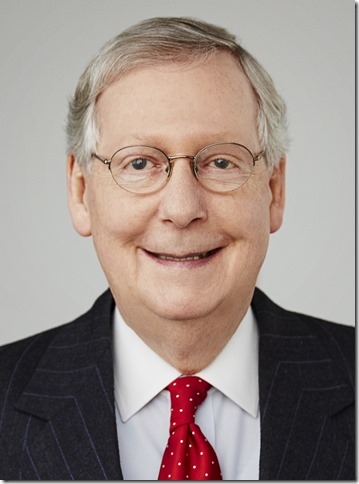I’m not a lawyer, much less a Constitutional scholar, so I really have little weight to throw toward resolving the question of who should preside over the second impeachment trial of President Donald Trump. This is the second time of late that I’ve opined on matters for which I am fairly unqualified to opine. I’m even starting to worry that I’m becoming a bit of a habitual self-investigator rather than merely an easily distracted autodidact.
At the same time, I have been trained as a post-grad philosophy student to deal with some fairly difficult texts, many of which contradict each other, all dealing with extremely abstruse ideas and involving dense argumentation. Which is to say, I really find it difficult to resist.
It was recently reported that Senator Patrick Leahy will be presiding over the upcoming impeachment trial of Donald Trump rather than Supreme Court Chief Justice Roberts. The reasons for this are twofold.
First, Justice Roberts appears to have demurred when approached by Senator Chuck Schumer concerning the matter.
Second, Article I, Section 3, Clause 6 states that “When the President of the United States is tried, the Chief Justice shall preside.” In other cases, such as impeachment of a Vice President or other civil officers, the President Pro Tempore of the Senate presides over impeachments. This case seems to fall somewhere in-between as Trump is no longer a sitting President of the United States.
The complication here is that how we read Article I, Section 3, Clause 6 on this matter is tied to our interpretation of Article II, Section 4 of the Constitution says this about the President of the United States: “The President, Vice President and all civil Officers of the United States, shall be removed from Office on Impeachment for, and Conviction of, Treason, Bribery, or other high Crimes and Misdemeanors.”
A minority of Constitutional experts who have weighed in on the matter interpret this section to mean that an ex-President of the United States cannot be impeached and tried, since the plain text of the Constitution says only Presidents, i.e. sitting Presidents, can be impeached and tried.
Against this argument opposing late impeachment, Brian C. Kalt, the foremost expert on late impeachments, makes it clear in a 2002 law journal article, The Constitutional Case for the Impeachability of Former Federal Officials, that this is not a correct interpretation of the Constitution’s plain text, which is much more ambiguous.
The plain text arguments tend to take the form that if non-sitting Presidents are impeachable, then the Constitution should have said “The President, Vice President or other civil officers [or former Presidents, former Vice Presidents or other former civil officers]…” Because it doesn’t then they are not.
An even less tenable argument being thrown around is that Donald Trump is now a private citizen and if the Constitution wanted to allow impeachment and trial of private citizens like you or me, then it would have said so. This is a fairly weak argument, though, since a private citizen being impeached for high crimes while in civil office is clearly different from trying a private citizen who has never held federal office (or even trying a former official for offenses committed out of office, for that matter).
The right way to look at Article II, Section 4 is that it serves to limit Congressional power regarding who can be impeached and tried, but sets no rules regarding the timing of the impeachment and trial. This interpretation brings it in line with precedent, both in English Common Law and the contemporary understanding of impeachment as articulated in the state constitutions, as well as structural arguments for late impeachment (Presidents should be discouraged from doing impeachable things late in their presidencies).
But if the timing of the impeachment trial is not constrained when the Constitution says “President of the United States” in the context of impeachment, then this would seem to apply to Article I, Section 3, Clause 6, also. If presidential impeachment trials in the Senate must be presided over by the Chief Justice of the Supreme Court, then this would be true whether an incumbent President or a former President is being tried.
Moreover, the Chief Justice does not appear to have a say in the matter. The power to try an impeached President is vested in the Senate and not the Supreme Court. The Senate makes its own rules about how it interprets the Constitution with regard to impeachment powers.
But I’m not a Constitutional expert and I’m not a lawyer. At the very least, though, it strikes this layman as odd that the Senate should choose to interpret “President” as including ex-Presidents in one part of the Constitution while deciding that it excludes ex-Presidents in another.
And if I’m noticing that, as a layman, it is not only probable but certain that the Republican defenders of President Trump in the Senate and dependable if flexible conservatives at the Wall Street Journal, National Review, and other publications will do so as well, arguing that while it may be the case that Donald Trump committed convictable acts, the process is so flawed that he must be exonerated.
Patrick Leahy cannot be allowed to preside over President Donald Trump’s second impeachment trial. Chief Justice Roberts needs to do his job.


